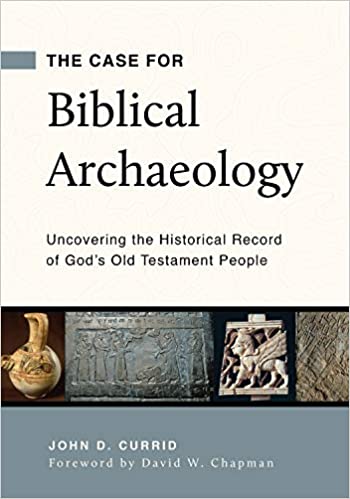Book Review: The Case for Biblical Archaeology
Last year, Shepherd’s Theological Seminary launched their Department of Biblical Archaeology. Although it lacked fan fare and an inaugural dig (due to Covid restrictions), there has been much excitement about the prospect of future digs in Israel and Jordan.

Since I am a part of the program, I wanted to write a review of John Currid’s book, The Case for Biblical Archaeology: Uncovering the Historical Record of God’s Old Testament People, published by P & R in 2020. Having a good introductory resource for archaeology is imperative for the student, and Currid’s book definitely fulfills that need.
The book itself is printed on quality paper, and has a collection of impressive color photographs and maps. In and of itself that helps aid the student, but it obviously increases the price somewhat. However, at the end of the day, the quality of the paper and photos are worth the extra price. The nature of archaeology being a visual and “hands on” science necessitates those elements.
The book itself is broken up into three major parts: (1) Setting, (2) Journey through the Land, and (3) Aspects of Society.
The Setting covers the geography of Israel, an introduction to archaeology and the Tell, as well as a short history of the occupation and peoples of the land. In the Journey through the Land, Currid’s book focuses on the specific archaeological sites, giving summaries of the evidence and noting the scholarly opinions on those sites (It should be noted that Currid’s book focuses on the archaeological finds and history up through the OT time period of 586 BC). This second second is about 85 pages, and uses up-to-date sources to summarize the current state of archaeology in specific locales. That is very helpful.
Finally, in discussing the Aspects of Society, Currid talks about the important elements of ancient societies. Aspects such as agriculture, water, defenses, burial practices, ceramics, etc. This section was probably my favorite just because I enjoy reading and learning about many of the cultural differences, since those obviously help us understand the world of the Bible.
Overall, I am impressed with the book, and think it will be a welcome addition to the student who wants to learn more about archaeology and the cultural setting of the Bible.
Thanks to P & R Publishing for giving me a review copy.